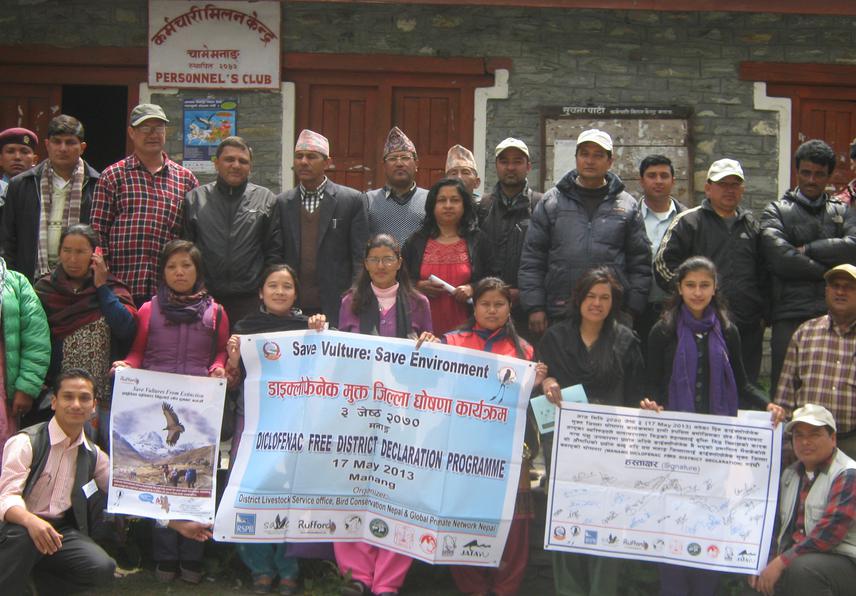Dikpal Krishna Karmacharya
Other projects
12 Mar 2014
Population Modelling and Participatory Conservation of Endangered Vultures in Nepal Himalaya
29 Mar 2016
Eyes in the Sky: Use of Conservation Drone for Long Term Ecological Monitoring and Conservation of Globally Threatened Vultures in Himalayan Regions of Nepal
This project intends to explore Himalayan vultures, their nests extensively using random GIS grids and to ensure the large safer NSAID-diclofenac free habitat for these existing majestic natural scavengers with monitoring and conservation activities.

Project area is the first and largest Conservation Area (7,629 sq km 28°36'N to 29°19'N and 83°28'E to 84°08'E) of Nepal, having significant breeding population and nests of Himalayan vultures (HV). Previous study between 2002-2005, shows the number of HV recorded per day and per kilometre of transect declined by 67% and 70% respectively, which is equivalent to a decline rate of 31–33% per year with 84% decline in active nest (Acharya et al. 2009) indicating there is immediate need of conservation measures to prevent these existing scavengers from being local extinction. Study between 2001-2006 shows no evidence of their decline but possibilities of their slow decline in the area (Virani et al. 2008). Hence, this study will help to fulfil the research gap adding information on existing data and establish population trends.
Extensive monitoring of Himalayan vultures, nesting sites, encounter rates, breeding success, signs, carcass availability, GIS mapping, trend of veterinary drugs in veterinary outlets will provide baseline data for long term vulture conservation and also support to meet the goals of our government's 'Vulture Conservation Action Plan, Nepal 2009-2013'.
Within Nepal, India and Pakistan Gyps vultures have undergone dramatic decline by 97% since the mid 1990s (Prakash et al. 2003; Green et al. 2004). The cause of this catastrophic collapse has been identified as a veterinary drug 'Diclofenac' (Oakes et al. 2004, Swarup et al. 2007). Recent study shows that the Diclofenac is also toxic to Himalayan vultures Gyps himalayensis (Das et al. 2010). Despite the ban of veterinary Diclofenac in Nepal, it is still recorded in the agrovet of study area (Acharya et al. 2009). Hence, this project will assess the use and prevailing stocks of Diclofenac with spreading availability of safe alternative drugs and conservation messages through outreach activities during eco days and campaigns involving communities engaging local government bodies to ensure long term conservation at local level as a means of in-situ conservation of existing vultures.